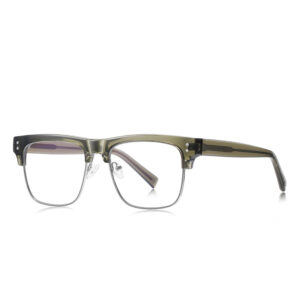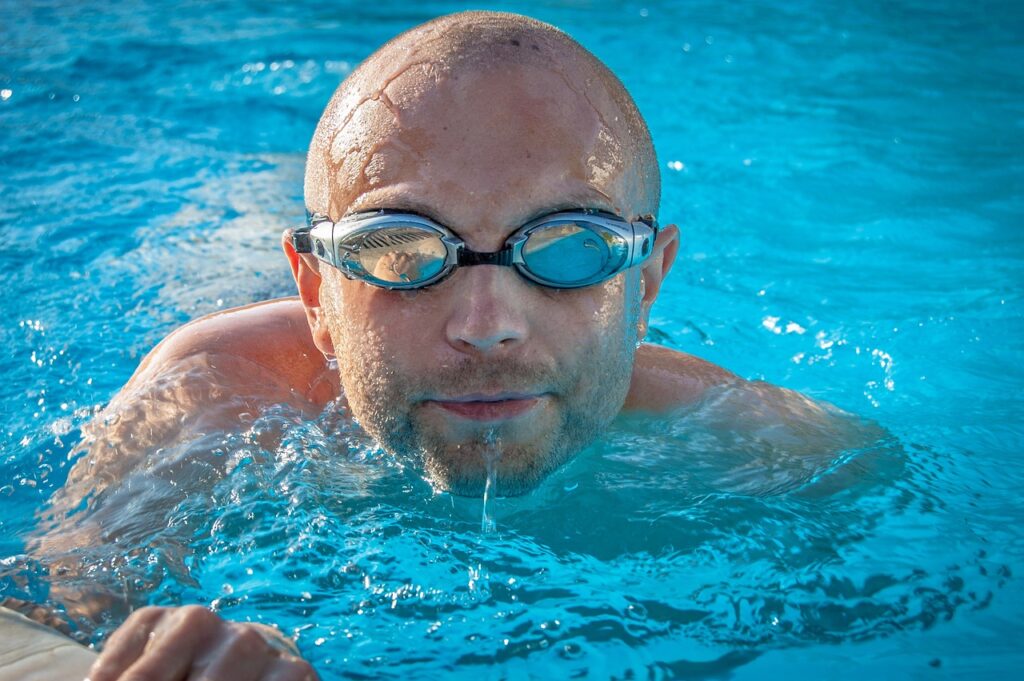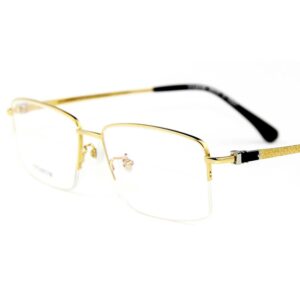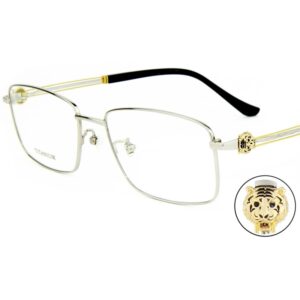In the modern eyewear market, material choice impacts more than just the appearance and comfort of the glasses; it also affects durability, production costs, and market positioning. In the eyewear manufacturing industry, injection molding and traditional handcrafting are the two primary production methods. Each method has its own set of unique strengths and limitations, and brands select the appropriate technique based on market demand and target customers. This article provides a detailed comparison between injection-molded eyewear and traditional eyewear materials, helping you better understand which method best suits different needs.
Overview of Injection Molded Eyewear

How Does Injection Molding Work?
Injection molding is a process where molten plastic materials like TR90, nylon, and polycarbonate are injected into molds to cool and solidify into the desired shape. The key advantage of this process is its efficiency. Once the mold is created, it allows for the rapid and mass production of highly consistent products. Injection molding is particularly suited for producing complex designs, as it can accurately create frames with intricate details.
Advantages of Injection Molding
The main advantage of injection molding lies in its efficiency and consistency. For brands that need to produce eyewear in large quantities, injection molding can significantly reduce per-unit costs while maintaining product quality. The diverse material choices allow brands to easily adjust designs to meet ever-changing market demands.
Disadvantages of Injection Molding
However, injection molding also has its limitations. The initial cost of mold creation is relatively high, making small-batch production less cost-effective. Additionally, while injection molding is ideal for large-scale production, handcrafting may be a better choice for brands looking to launch limited editions or highly customized products.
Overview of Traditional Eyewear Materials

How Do Traditional Materials Work?
Traditional eyewear manufacturing typically involves materials such as acetate, metal alloys, and wood. These materials are shaped and designed through processes like cutting, layering, handcrafting, and polishing. Particularly in the high-end market, many luxury brands rely on these handcrafted techniques to produce one-of-a-kind eyewear frames.
Advantages of Traditional Methods
Handcrafted eyewear often possesses a unique artisanal quality that is difficult to replicate with injection molding. Traditional materials are particularly suitable for limited editions and customized products, as each detail can be carefully crafted to meet individual consumer preferences. For those seeking uniqueness and high quality, traditional eyewear is undoubtedly more appealing.
Disadvantages of Traditional Methods
However, the production speed of traditional methods is slower than that of injection molding, and labor costs are higher. The manual nature of the process introduces variability in product quality between different batches. Additionally, traditional methods are less scalable for mass production, making it harder to reduce costs and ultimately leading to higher prices.
Material Properties Comparison
| Property | Injection Molded Eyewear | Traditional Material Eyewear |
| Durability | Made with high impact-resistant materials like TR90 and polycarbonate, flexible and strong | Acetate and metal frames are durable but less impact-resistant |
| Weight | Lighter, suitable for long-term wear | Traditional materials (e.g., metal) are heavier, acetate is relatively lightweight |
| Aesthetic | Wide range of color and design options, but less texture variety | Rich textures and deep colors, ideal for high-end markets |
Injection molded eyewear materials like TR90 and polycarbonate are known for their high impact resistance and flexibility, making them especially suitable for sports eyewear and products requiring high durability. These materials are also lightweight, making the eyewear comfortable for prolonged wear, whether in everyday life or during sports. However, injection-molded materials might lack the rich texture and natural feel that traditional materials offer, even though they provide a broad spectrum of colors and designs.
In contrast, traditional materials like acetate and metal, though heavier, offer richer textures, particularly in the high-end market. Acetate eyewear is commonly found in luxury brands because the material can present deep colors and unique handcrafted textures, giving each pair of glasses a one-of-a-kind aesthetic appeal.
Environmental Impact
In today’s consumer environment, environmental concerns are increasingly significant. The environmental impact of injection-molded and traditional materials varies mainly in the following ways:
Environmental Impact of Injection Molded Eyewear
Injection molding typically uses petroleum-based plastics, which, while durable, have a significant environmental footprint during production. However, with growing environmental awareness, many manufacturers are now using recycled materials and bio-based polymers to reduce carbon footprints and environmental pollution. These materials not only decrease dependence on virgin plastics but also reduce waste generated during production.
Environmental Impact of Traditional Eyewear Materials
If natural materials like wood or eco-friendly acetate are used, traditional eyewear can have sustainability advantages. These materials generally involve fewer chemicals during production, resulting in less environmental harm. However, some traditional processes (e.g., acetate production) may involve the use of harmful chemicals, negatively impacting the environment. Therefore, when choosing traditional materials, it’s also important to consider the environmental sustainability of the production process.
Cost Considerations
The differences in cost between injection molding and traditional materials are significant:
| Factor | Injection Molded Eyewear | Traditional Material Eyewear |
| Initial Investment | High mold cost, low per-unit production cost | High material and labor costs, suitable for high-end customization |
| Production Efficiency | Highly efficient, suitable for large-scale production | Slower production speed, suitable for small-scale customization |
| Market Pricing | Moderately priced, suitable for mass-market | Higher priced, suitable for high-end markets |
The largest cost in injection molding eyewear lies in mold creation. Although mold creation is expensive, once the mold is completed, the production cost per unit drops significantly. Therefore, this method is ideal for large-scale production, effectively lowering market prices, particularly suitable for mass-market brands. In contrast, the cost of traditional eyewear primarily involves material and labor, especially in the handcrafting process, making traditional eyewear more expensive and typically positioned in the high-end market.
Market Trends and Consumer Preferences
Market positioning and consumer preferences influence material demand differently:
Injection Molded Eyewear

Injection molded eyewear is highly popular in mass markets, sports eyewear, and fashion brands. It is not only affordable but also quickly responds to market trends by launching new styles that meet consumer needs. With increasing environmental awareness, more and more consumers are paying attention to eco-friendly materials, which has driven the use of sustainable injection-molded materials. Brands can attract environmentally conscious consumers by choosing sustainable materials and standing out in the market.
-

Bulk Wholesale Fashion TR90 Eyewear in Bulk – 2203
$50.00 Select options This product has multiple variants. The options may be chosen on the product page -

Bulk Wholesale TR90 Optical Frames Supplier – KY58092
$50.00 Select options This product has multiple variants. The options may be chosen on the product page -

Buy Fashion TR90 Eyewear in Bulk – 8600
$50.00 Select options This product has multiple variants. The options may be chosen on the product page -

Wholesale Fashion TR90 Eyewear – 2068
$50.00 Select options This product has multiple variants. The options may be chosen on the product page
Traditional Eyewear Materials

Traditional eyewear materials are more favored by luxury brands and consumers who seek unique, artisanal quality. These consumers are willing to pay a premium for the uniqueness and high quality of handcrafted products. Despite the higher production costs, traditional materials continue to have strong appeal in the high-end market. Brands that emphasize design and craftsmanship details often choose traditional materials to reflect the value and uniqueness of their products.
-

Bulk Wholesale Fashion Wood Sunglasses – WS411
$95.00 Select options This product has multiple variants. The options may be chosen on the product page -

Wholesale Designer Wood Eyewear – WS409-RX
$95.00 Select options This product has multiple variants. The options may be chosen on the product page -

Wholesale Designer Wood Sunglasses – WS101
$95.00 Select options This product has multiple variants. The options may be chosen on the product page -

Wholesale Fashion TR90 Eyewear – 2068
$50.00 Select options This product has multiple variants. The options may be chosen on the product page
Conclusion
Both injection molding and traditional materials have their own unique advantages and limitations. Injection molding, with its efficiency, lower costs, and variety of material choices, is ideal for large-scale production and quickly adapting to market demands. On the other hand, traditional materials, with their rich textures and customization potential, have a solid place in the high-end market.
For manufacturers, the choice of production method and material depends on brand positioning and target customer base. If your goal is mass production and market penetration, injection molding is undoubtedly the better choice; however, if you aim to build a unique, high-end brand image, traditional materials may be more suitable.
In the future, more brands might explore combining these two methods, leveraging the efficiency of injection molding with the rich textures of traditional materials to create eyewear that is both innovative and of high quality. When selecting a production method, manufacturers should consider brand positioning and target customer groups to ensure competitiveness in a crowded market. Ultimately, the goal is to provide consumers with eyewear that is both aesthetically pleasing and functional, meeting the diverse needs of different markets and leading industry trends.
Contact Our Experts
Want to make the best choice for your eyewear business?
Reach out to us for expert advice and detailed product information!
FAQ: Comparison Between Injection Molded Eyewear and Traditional Eyewear Materials
1. What is the primary difference between injection molded eyewear and traditional eyewear?
The main difference lies in the manufacturing process and the materials used. Injection molded eyewear is produced by injecting molten plastic into molds, making it highly efficient for large-scale production. Traditional eyewear, on the other hand, often involves handcrafting materials like acetate, metal, or wood, resulting in a more artisanal, unique product but with higher production costs and lower scalability.
2. What materials are commonly used in injection molded eyewear?
Common materials for injection molded eyewear include TR90, nylon, and polycarbonate. These materials are chosen for their durability, flexibility, and lightweight properties, making them ideal for sports eyewear, children’s glasses, and other high-impact applications.
3. Why are traditional eyewear materials like acetate and metal often more expensive?
Traditional eyewear materials like acetate and metal are more expensive due to the labor-intensive handcrafting processes required. Each frame is often cut, layered, and polished by hand, which increases both time and labor costs. Additionally, the materials themselves, especially when sourced for high-quality, luxury eyewear, tend to be pricier.
4. How does the durability of injection molded eyewear compare to traditional eyewear?
Injection molded eyewear, especially those made from materials like TR90 and polycarbonate, is typically more durable in terms of impact resistance and flexibility. Traditional materials like acetate and metal can be strong but may not offer the same level of impact resistance, making them potentially less durable in rough conditions.
5. Which type of eyewear is more environmentally friendly: injection molded or traditional?
The environmental impact depends on the materials used. Traditional eyewear made from eco-friendly acetates or sustainably sourced wood can be more environmentally friendly. However, many manufacturers are now using recycled and bio-based materials in injection molding, which helps reduce the carbon footprint of these products.
6. What are the cost differences between injection molded and traditional eyewear?
Injection molded eyewear generally has lower production costs once the mold is created, making it more cost-effective for mass production. Traditional eyewear, due to the handcrafting and high material costs, tends to be more expensive, particularly in the luxury market.
7. Can injection molded eyewear offer the same level of customization as traditional eyewear?
Injection molding can offer a wide range of designs and colors, but traditional handcrafting allows for a higher level of customization, especially for limited editions and bespoke designs. Traditional methods offer a unique, artisanal quality that is difficult to replicate with injection molding.
8. What are the market trends for injection molded vs. traditional eyewear?
Injection molded eyewear is popular in mass-market segments, sports eyewear, and affordable fashion brands due to its cost-effectiveness and production efficiency. Traditional eyewear materials continue to dominate the high-end market, where consumers seek unique, artisanal products with a luxurious feel.
9. Is one method better than the other for eyewear production?
Neither method is universally better; it depends on the brand’s goals, target market, and production needs. Injection molding is ideal for large-scale production and quick market responses, while traditional methods excel in creating unique, high-quality products for niche markets.
10. Will combining both methods become a trend in the eyewear industry?
Yes, it is possible that more brands will start combining the efficiency of injection molding with the rich textures and customizability of traditional materials to create innovative and high-quality eyewear. This hybrid approach could offer the best of both worlds, appealing to a broader range of consumers.
Clarify Your Questions
Still have questions about custom eyewear services?
Contact us for expert insights and tailored solutions!
























